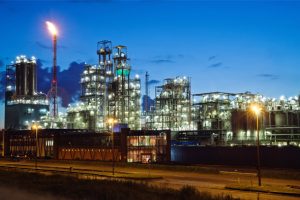Unlike traditional liquid paint that is applied through an evaporating solvent, powder coating is applied using free-flowing dry powder that is cured with heat. Powder coatings have numerous advantages over liquid coatings because of their chemical makeup.
There are several types of powder coating available to you, but they all fall under two categories: thermoplastics and thermosets. Power coating is used in several industries around the world as a preferred alternative to conventional coatings for everyday coating applications.
You can find powder coating in appliances such as microwaves and fridges, as well as outdoor products, industrial machines and automotive items. Now that we have an idea of what they’re used for, let’s explore the different types of powder coatings.
Thermoplastics
Thermoplastics are synthetic substances that can be formed and reformed multiple times using high temperatures. Powder coatings made from these materials are favoured for their extreme resistance to wear and tear. Thermoplastics can create the following types of powder coatings:
- Polyvinyl Chloride (PVC)
- Polyolefin
- Polyester (most used thermoplastic for powder coating)
- Nylon
Coatings made from thermoplastics are very durable and resistant to many factors and situations. Nylon for example is impact resistance and offers protection against solvents and corrosive chemicals.
Polyester however is the most used thermoplastic for powder coats. They’re impact resistant, weatherproof and age very well. These powder coatings are mostly used for outdoor equipment and exposed machine parts.
Thermosets
Thermoset powder coatings go through a chemical cross-linking reaction that is non-reversable once baked. The process changes their physical make up and hardens them into a solid coating. Because of this, they’re resistant to ridiculously high temperatures.
They cure harder than thermoplastics which can make them more brittle. The following types of powder coatings can be made from thermosets:
- Epoxy (most used thermoset for powder coating)
- Epoxy-Polyester Hybrid (adding polyester to epoxy makes it softer and less impervious to cracking)
- Acrylic
- Silicon-Based Powders
Thermosets are hard, brittle and offer high insulation from electricity. They can survive in temperatures over 500 degrees Celsius. In the case of epoxy powder coatings however, their susceptibility to UV light (present in sunlight) causes them to chalk and dull overtime. As such, they’re mostly used for indoor applications.
Get in touch with us today to learn more about what a good coating solution can do for you.

